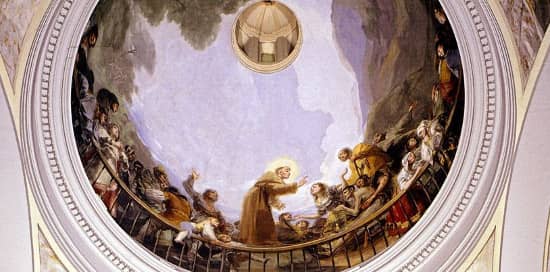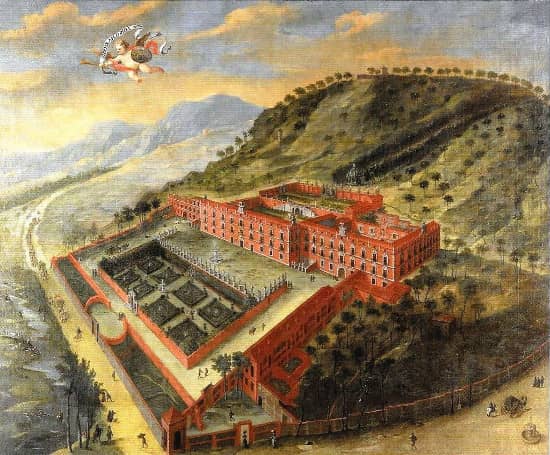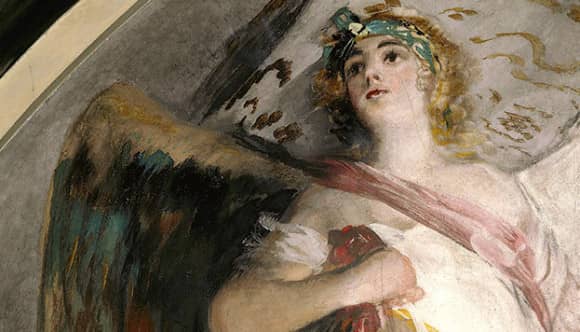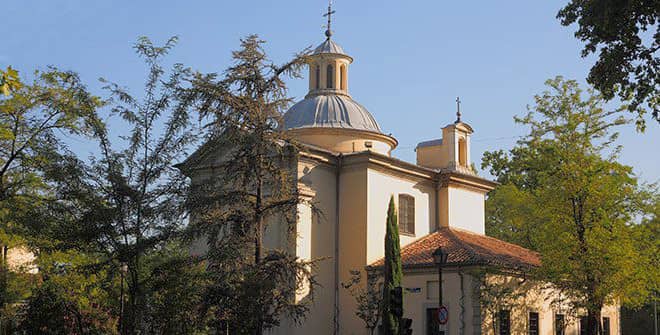
Goya and the Hermitage of San Antonio de la Florida
If you are looking for a quiet walk in Madrid, not far from the Manzanares river, at the foot of Principe Pio mountain, you may find a tiny yet magnificent chapel called “San Antonio de la Florida”, whose murals were painted by none other than Francisco de Goya, the famous Spanish painter!
But why is it called “San Antonio de la Florida”?
The hermitage is dedicated to St. Anthony of Padua, a XIIth-century Portuguese Franciscan who was canonized during his lifetime for performing miracles and cures in Lisbon. In the XVIIIth century, his devotion became very popular, with many Madrilenians celebrating his pilgrimage every year on June 13. For this reason, in 1732, a chapel was built for her cult, and after many moves and reconstructions, King Charles IV gave it its current location, close to the “Real Sitio de la Florida”, a royal estate built on the former orchard of the same name. These royal palaces and gardens no longer exist, but were a true architectural treasure, with a sumptuous palace, multi-level gardens, orchards, a dovecote, a stable and some fountains.
It was Prince Francesco Pio of Savoy who acquired it and gave it its splendor, and, a few centuries later, still gave the mountain, as well as the railway station, the title of “Prince Pio”.
It was therefore a Bourbon monarch, Charles IV, who finally acquired the estate and decided to commission the neo-classical architecture of the new hermitage to Felipe Fontana in 1792, and the interior decoration to Francisco de Goya (1745-1828), who is buried there. This is the only remaining vestige of this Crown property.

All Goya’s talent
As you enter the chapel, you are immediately caught by the softness of the frescoes by Francisco de Goya. Although Saint Anthony lived in Lisbon in the XIIth century, it’s the Madrid landscape of the early XIXth that stands out.
True to his preferences, the painter joyfully depicts contemporary figures of his time, and the Spanish customs he made immortal in his tapestry cartoons for the Royal Palace in Madrid, as well as in his paintings exhibited at the Prado Museum. Close to the ideas of the Enlightenment and humanist intellectuals, Goya took great pleasure in illustrating traditional Madrid society of the late XVIIIth and early XIXth centuries, with its occupations, dress, leisure activities and festivals, highlighting the popular classes that were the lifeblood of the capital.
Although commissioned for a chapel, the work features very few pious symbols, and rather than emphasizing the miracles performed by San Antonio – although the saint can be seen resurrecting a man in the building’s dome – Goya again shows us the common pilgrims who come to worship him. Moreover, the believers are painted alongside Saint Anthony, hardly subject to the usual hierarchy of church decorations.
And these are not the only liberties taken by the artist; the angels can also surprise us! Although described as genderless in theology, here they are painted with completely new feminine features.

The quality of the work and Goya’s intention in this work in trompe l’oeil explain why the artist, although he died in Bordeaux, in France, is buried today inside the hermitage, mo monument representative of one of the happiest periods of his life, when he received commissions and privileges and was able to transcribe the cheerfulness of his city’s inhabitants.
A well-protected monument
In order to preserve these frescoes, the building was not only classified as a historic monument by Spain in 1905, but was also split into two chapels a few years later!
The first one, the original, allows us to discover the works of Francisco de Goya and pay our respects at his tomb, while the second, a copy, is still dedicated to the cult of Saint Anthony of Padua, with all the peace and quiet this worship requires.

In front of the entrance to these monuments, the statue of Goya with his painting palette welcomes us to his neighborhood, where he chose to spend his last years in the capital, near the Manzanares river.
Until 2005, three restoration campaigns were carried out to make these chapels available to visitors free of charge. So don’t hesitate to stop by during your stay in Madrid!
And to find out more about the history of the city and Francisco de Goya, come and meet us on a guided tour of the city and the Prado Museum in our free tour Madrid .